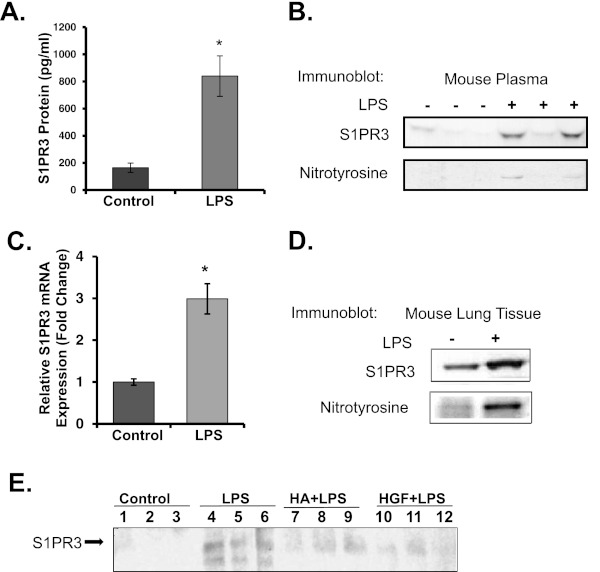Figure 1.
LPS-induced murine acute lung injury (ALI) increases the nitration of sphingosine-1–phosphate receptor–3 (S1PR3) in lung tissues and plasma. Plasma and lung tissue were obtained from mice challenged with intratracheal LPS (2.5 mg/kg, n = 10) or H2O (control, n = 8) for 18 hours. (A) Levels of S1PR3 protein expression in plasma were detected by immunoassay (ELISA) with anti-S1PR3 antibodies. (B) Nitrated S1PR3 protein in plasma was detected by immunoprecipitation with anti-S1PR3 and probing with anti-nitrotyrosine antibodies. (C) Levels of S1PR3 gene expression in lung tissue were detected by genome-wide microarray profiling of mRNA in LPS-induced ALI mice, compared with control mice (*P < 0.01). (D) Concentrations of nitrated S1PR3 were increased in lung tissue of LPS-exposed mice compared with control mice (*P < 0.01). (E) Concentrations of S1PR3 in plasma of mice were detected by immunoblotting with anti-S1PR3 antibody, 24 hours after mice were instilled with LPS 2.5 mg/kg intratracheally, with high-molecular-weight hyaluronan (HA) 1.5 mg/kg, hepatocyte growth factor (HGF) 50 μg/kg, or saline control. These experiments were repeated three times.

